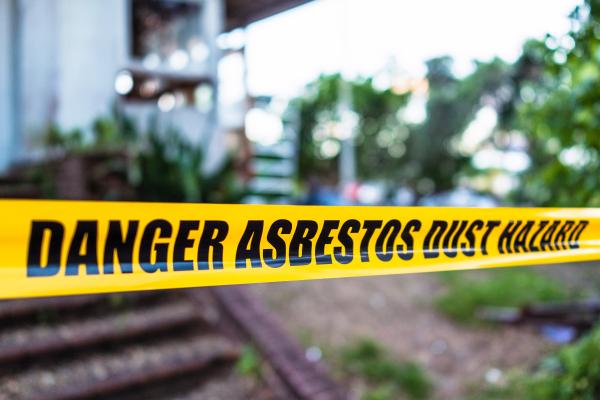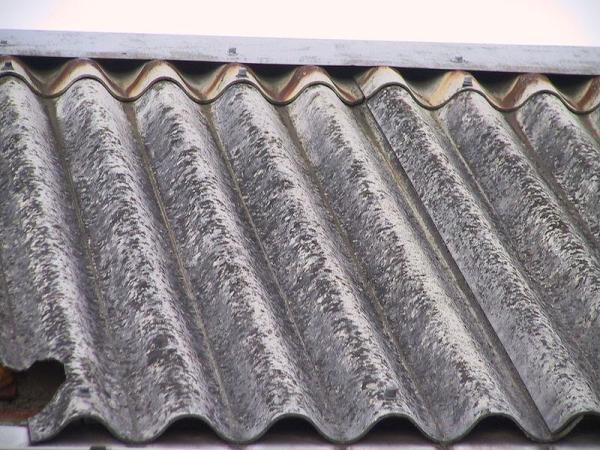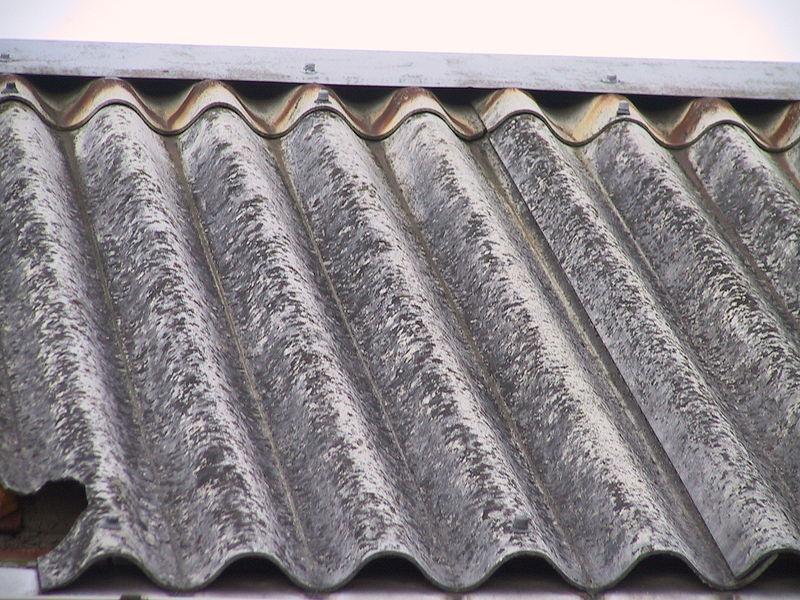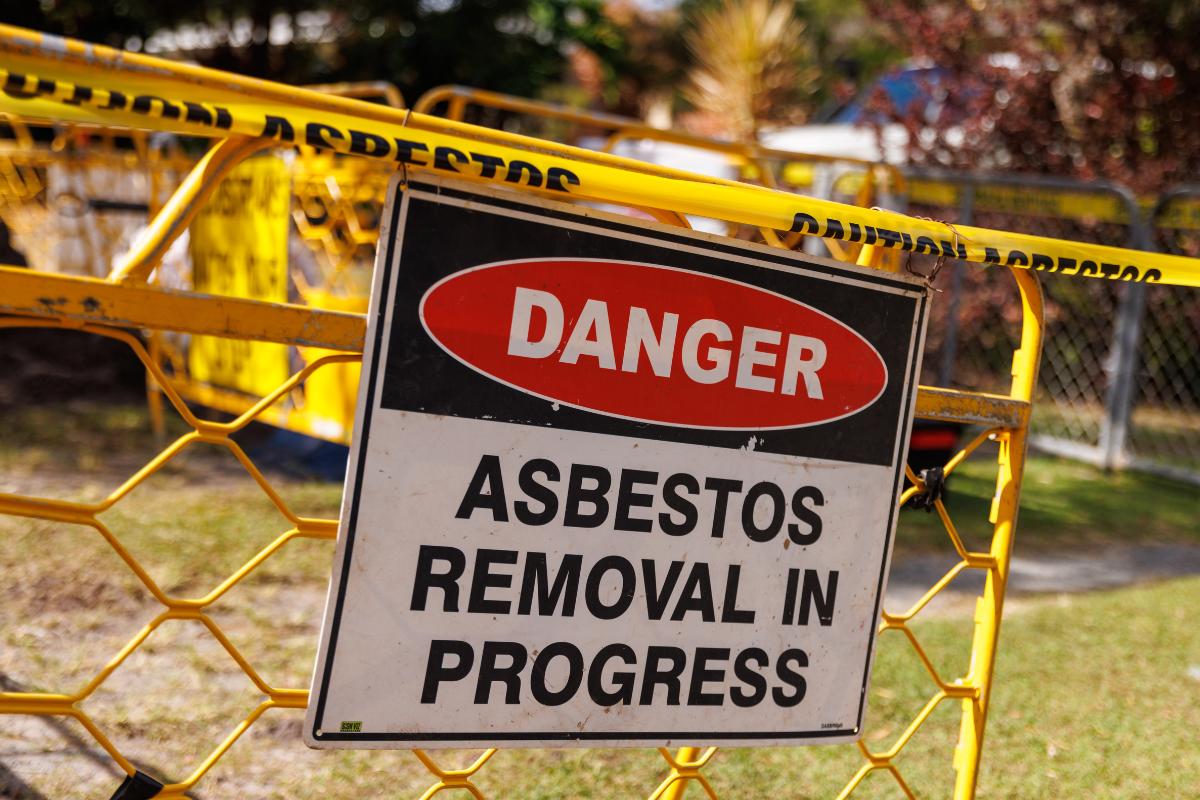Where is Asbestos Found? - Locations & Health Risks


Asbestos is a naturally occurring mineral once widely used in construction and manufacturing due to its heat resistance and durability. However, asbestos exposure can have serious health consequences, leading to diseases like mesothelioma, lung cancer, and asbestosis. While its use has been heavily regulated in many countries, asbestos can still be found in older homes, buildings, and workplaces, putting people at risk.
In this article, by thedailyECO we will exaplin what asbestos is, where is asbestos commonly found and discuss the health risks associated with asbestos exposure and provide practical advice on identifying asbestos in your environment.
What is asbestos and its properties
Asbestos is a naturally occurring group of minerals of metamorphic origin, formed from the transformation of other rocks or minerals due to natural processes. It consists of silica fibers along with metals such as iron, manganese, magnesium, and calcium.
Types of asbestos:
Each type has distinct color characteristics:
- Chrysotile (white asbestos)
- Crocidolite (blue asbestos)
- Amosite (brown asbestos)
- Anthophyllite (yellow asbestos)
- Actinolite (green asbestos)
- Tremolite (gray asbestos)
What are the properties of asbestos?
The term "asbestos" derives from Greek, meaning "indestructible," which reflects its remarkable properties:
- Withstands great forces or pressures without breaking.
- Maintains its structure when subjected to rubbing or friction.
- Provides excellent thermal insulation and can withstand temperatures up to 1000°C/1800°F.
- It is non-flammable and prevents fire spread.
- It has a strong chemical resistance since it resists erosion, impregnation, or corrosion from acids, bases, and chemical solvents.
- Resists action from biotic agents such as fungi, pests, and other organisms
- Prevents sound penetration. Helps reduce noise between rooms or spaces.
- Prevents electrical current from flowing through.
- It is quite flexible and can be woven into fabrics.
Asbestos is just one example of how minerals can impact our lives. Discover the distinctions between various earth materials in our companion guide to geological classifications.

Common uses of asbestos
Asbestos has a long history dating back to ancient civilizations. The Egyptians wove it into mats and incorporated it into the construction of sarcophagi, while the Romans crafted highly resistant, fireproof fabrics from its fibers. Even Charlemagne reportedly wore capes containing asbestos into battle, valued for their fire-resistant properties.
Despite these early applications, it wasn't until after the Industrial Revolution that asbestos use truly exploded, eventually reaching production levels of 5.7 million tons worldwide at its peak.
Construction became the primary sector for asbestos use, with fiber cement products dominating the market. The automotive industry became the second-largest consumer, incorporating asbestos into friction products like brake pads and clutches. The textile industry followed, creating specialized heat-resistant fabrics and materials.
Beyond these major applications, asbestos found its way into numerous specialized fields. Oil and gas production facilities used it extensively, as did metal smelting operations where heat resistance was crucial. The manufacturing of wheels and tires incorporated asbestos components, while shipyards used massive amounts for repair and construction of vessels. Nuclear plants relied on its insulating properties to maintain safety and temperature control.
In homes and buildings, asbestos became nearly ubiquitous in hidden in insulation wrapping pipes and filling wall cavities, mixed into floor tiles, textured ceilings, joint compounds, cement, and decorative paints. Everyday products from hairdryers to ironing board covers contained this seemingly miraculous material.
By the 1970s, however, the dark side of asbestos became impossible to ignore. Workers exposed to asbestos began developing serious illnesses.The delayed onset of these diseases (often 20-50 years after exposure) meant that cases continued to rise decades after exposure, with projections suggesting peak cases would appear around 2020.

Where is asbestos normally found?
In the natural world, asbestos exists virtually everywhere, nestled within parent rock formations in distinctive layers. These deposits, most abundant in the USA, Canada, South Africa, China, and Russia, have been mined extensively throughout history to extract this mineral for commercial use.
In our built environment, asbestos found its way into countless aspects of construction and manufacturing. Walk through an older neighborhood, and you'll likely pass homes with asbestos hiding in plain sight. Look up, and you might see fiber cement roofing. Step inside these older buildings, and asbestos surrounds you in less obvious ways. The textured "popcorn" ceilings popular before 1978 often contain it. The vinyl floor tiles beneath your feet, especially the classic 9"×9" squares, frequently incorporated asbestos for durability. Behind walls, it lurks in pipe insulation with its characteristic white or gray wrapping, while attic insulation in homes from the 1930s through 1950s commonly used this mineral for its fire-resistant properties.
Industrial facilities house even more concentrated collections of asbestos materials. Power plants and refineries relied on it for thermal insulation critical to their operations. Manufacturing equipment often used asbestos gaskets and seals wherever heat resistance was needed. Throughout commercial buildings, even fire doors paradoxically contained this now-recognized carcinogen.
Transportation systems embraced asbestos just as thoroughly. When you see a classic car, its brake pads and clutch components likely contained asbestos originally. Railway cars and ships incorporated massive amounts throughout their construction, making shipyards particularly hazardous environments for workers.
Even everyday household items weren't immune from asbestos inclusion. Older hair dryers, toasters, and irons sometimes contained it, as did heat-resistant textiles like ironing board covers and oven mitts. These common products brought asbestos directly into daily domestic life.
Today, the disposal of asbestos presents significant challenges in waste management. Its removal requires specialized companies equipped to comply with strict safety regulations designed to prevent fiber release during handling, transport, and disposal. This approach acknowledges the critical understanding that undisturbed asbestos generally poses minimal risk, it's when materials deteriorate or are disturbed during renovation that dangerous fibers become airborne.

What does asbestos do to the human body?
Asbestos poses a serious danger to human health primarily because of its unique physical structure and how our bodies react to it when exposed.
When asbestos-containing materials are disturbed, they release microscopic fibers into the air. These fibers are incredibly tiny and invisible to the naked eye. Once airborne, they can float for days before settling, making them easy to inhale or swallow without detection.
What makes these fibers particularly hazardous is their shape and durability. Asbestos fibers are needle-like and extremely resistant to breakdown, whether by heat, chemicals, or biological processes. When inhaled, they can penetrate deep into the lungs, embedding themselves in the delicate lung tissue. Unlike many particles that enter our lungs, our body cannot effectively break down or remove these fibers once they're lodged in place.
Over time, these embedded fibers cause persistent inflammation and scarring. The body's immune cells attempt to engulf and eliminate the foreign particles but cannot digest the durable asbestos fibers. This ongoing inflammatory response leads to several serious health conditions:
- Asbestosis: develops when extensive scarring (fibrosis) occurs in lung tissue, reducing elasticity and making breathing progressively more difficult.
- Mesothelioma: is a rare but aggressive cancer affecting the thin lining of organs, most commonly the lungs (pleural mesothelioma) or abdomen (peritoneal mesothelioma). It can develop after relatively minimal exposure and typically appears 20-50 years after initial contact with asbestos.
- Lung cancer: the risk increases substantially for those exposed to asbestos, with the risk multiplied dramatically for smokers who are also exposed to asbestos.
Other cancers linked to asbestos exposure include ovarian cancer and laryngeal cancer, while pleural plaques and effusions represent non-cancerous but problematic conditions that can develop.
The extended latency period between exposure and disease development makes asbestos particularly treacherous. Someone exposed today might not develop symptoms for decades, by which time the disease has often progressed significantly. This delay also complicated the recognition of asbestos as a health hazard, as workers were exposed for years before connections were made to their later illnesses.
How much asbestos exposure is dangerous?
There is no known safe level of exposure to asbestos, and all types of asbestos fibers are considered hazardous to human health, though some varieties may present greater risks than others.

What should I do if I touched asbestos?
If you've touched asbestos, try not to panic. A single, brief exposure generally carries minimal risk. Here's what you should do:
- Stop what you're doing and move away from the area where the asbestos is located to prevent further exposure. If you're indoors, carefully leave the room without disturbing more material.
- Remove the clothes you were wearing when you touched the asbestos. Don't shake them, as this could release fibers into the air. Place them in a sealed plastic bag for proper disposal later, or wash them separately from other laundry if you plan to keep them.
- Wash your entire body thoroughly with soap and water, paying special attention to your hands, under your nails, and any other areas that may have come into direct contact with the asbestos. This helps remove any loose fibers that might be on your skin.
- If the material you touched was definitely asbestos and it was damaged or crumbling (friable), consider consulting your doctor to document the exposure. While there's no immediate medical treatment needed for a single brief exposure, having it in your medical record could be important if health issues arise later.
For the area containing asbestos, do not attempt to clean it up yourself if it's damaged or deteriorating. Contact a licensed asbestos abatement professional to properly assess and handle the material. If the asbestos-containing material appears intact and undamaged, it generally poses less risk, but professional evaluation is still recommended.
Exploring safer building alternatives? Discover how modern sandwich panels are revolutionizing construction in our comprehensive guide.
If you want to read similar articles to Where is Asbestos Found? - Locations & Health Risks, we recommend you visit our Environment (other) category.
- Thives, L. P., Ghisi, E., Thives Júnior, J. J., & Vieira, A. S. (2022). Is asbestos still a problem in the world? A current review. Journal of Environmental Management, 319, 115716. https://doi.org/10.1016/j.jenvman.2022.115716
- Frank, A. L., & van Zandwijk, N. (2024). Asbestos history and use. Lung Cancer. https://doi.org/10.1016/j.lungcan.2024.107828
- Pira, E., Donato, F., Maida, L., & Discalzi, G. (2018). Exposure to asbestos: past, present and future. Journal of Thoracic Disease, 10(Suppl 2), S237-S245. PMCID: PMC5830559, PMID: 29507791
- Mossman, B. T., Bignon, J., Corn, M., Seaton, A., & Gee, J. B. L. (1990). Asbestos: Scientific Developments and Implications for Public Policy. Science, 247(4940), 294-301. DOI: 10.1126/science.2153315









